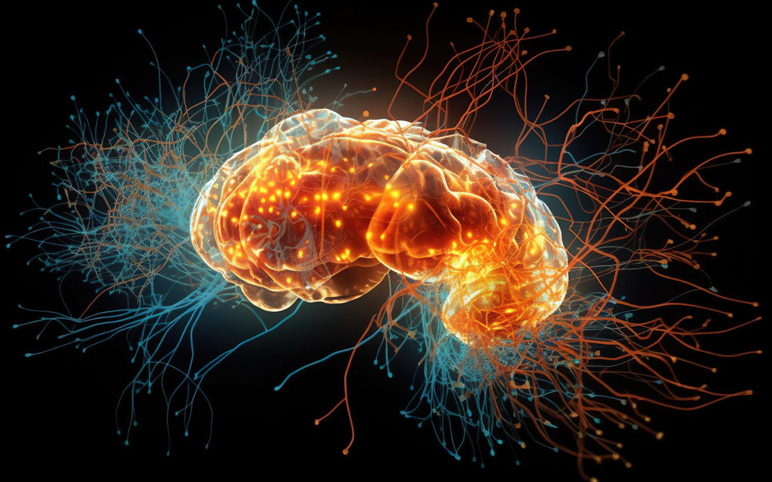Will a Robust Pipeline Address the Major Depressive Disorder Treatment Conundrum?
Mar 02, 2025
In the contemporary world, major depressive disorder (MDD) is one of the diseases responsible for the greatest healthcare burden. In the United States, more than 24 million people suffer from major depressive disorder each year, while in Europe, about 20 million are diagnosed with the major depressive disorder each year. These numbers might not be an accurate reflection owning to continuous ignorance about mental health issues as well as a social stigma associated with mental health conditions.
A plethora of pharmacological drugs from different classes acting by more than half a dozen mechanisms are available for major depressive disorder treatment. However, a significant unmet need for major depressive disorder treatment remains. The currently available major depressive disorder medications used to treat include antidepressants that act directly on monoamine mechanisms, impelling serotonin, norepinephrine receptors, and neurotransmitters for serotonin, norepinephrine, and dopamine. The approval of SPRAVATO in 2020 was a breakthrough in the major depressive disorder treatment after a few decades of no novel MDD treatment. However, it has not impacted the major depressive disorder market significantly owing to its exorbitant cost and significant abuse potential. It is firmly regulated and administered only under direct HCP supervision in accredited clinics and post-administration observation.
Thus, the struggle for major depressive disorder patients is not over. The challenges like the development of treatment resistance, treatment-associated side-effects, delayed therapeutic action, and abuse potential continue to be a roadblock in the major depressive disorder treatment.
Downloads
Article in PDF
Recent Articles
- 7 Game-Changing Major Depressive Disorder Drugs in Development
- CG Oncology Teams Up With Merck & BMS; Parse Biosciences Partners With Molecular Diagnostics...
- How is Artificial Intelligence (AI) Playing a Constructive Role in Mental Health Management?
- Machine Learning Models to Help Predicting Cancer Symptoms, Plan Treatment
- Major Depressive Disorder Market Quadrant Growth Soars Owing to Expected Launch of Key Therapies
High unmet needs warrant novel major depressive disorder therapies to cater to the needs of the people affected with MDD.
Current MDD Treatment Landscape?
Major depressive disorder is a complex mental health condition that requires a multifaceted approach to treatment. Managing MDD involves a combination of pharmacological, psychotherapeutic, interventional, and lifestyle modifications. The first-line treatment for major depressive disorder typically includes medications, psychotherapy, or a combination of both. Studies have shown that combining major depressive disorder medication with cognitive behavioral therapy for major depressive disorder yields better outcomes than using either method alone. For severe cases, electroconvulsive therapy (ECT) has been found to be highly effective.
Among the major depressive disorder therapies, pharmacological treatment remains the cornerstone of management. The currently recommended medications include selective serotonin reuptake inhibitors (SSRIs), tricyclic antidepressants (TCAs), monoamine oxidase inhibitors (MAOIs), and serotonin-norepinephrine reuptake inhibitors (SNRIs). SSRIs are the most frequently prescribed major depressive disorder medications, as they work by increasing serotonin levels in the brain, promoting better mood regulation. In cases where standard antidepressants do not provide adequate relief, newer major depressive disorder treatments are emerging to address gaps in efficacy.
Psychotherapy also plays a vital role in managing MDD, with cognitive behavioral therapy (CBT) for major depressive disorder being one of the most effective approaches. Other forms of therapy, such as interpersonal therapy (IPT) and dialectical behavior therapy (DBT), can help patients address negative thought patterns and improve emotional resilience. For individuals experiencing severe symptoms or suicidal ideation, hospitalization or participation in outpatient treatment programs may be necessary to ensure safety and continuous care.
The market for major depressive disorder treatments is expanding, with the 7MM market valued at approximately USD 7 billion in 2023. This is expected to grow further by 2034 due to increasing awareness and a rising prevalence of MDD. Despite the availability of multiple treatment options, significant unmet needs persist in achieving full remission, addressing cognitive impairment in depression, and developing novel treatment strategies. In response, pharmaceutical companies are actively researching major depressive disorder medications with unique mechanisms of action to fill these gaps.
Several innovative therapies have recently gained approval:
- AUVELITY (dextromethorphan hydrobromide and bupropion hydrochloride) – Developed by Axsome Therapeutics, this extended-release tablet is a combination of dextromethorphan (an NMDA receptor antagonist and sigma-1 receptor agonist) and bupropion (a CYP450 2D6 inhibitor). It has been approved for treating MDD in adults, offering a novel approach to mood stabilization.
- VRAYLAR (cariprazine) – Developed by AbbVie and Gedeon Richter, VRAYLAR is an atypical antipsychotic used as an adjunctive therapy to antidepressants. It functions through partial agonist activity at dopamine D₂ and serotonin 5-HT1A receptors, as well as antagonist activity at serotonin 5-HT2A receptors.
- SPRAVATO (esketamine) – This nasal spray, developed by Johnson & Johnson, is a groundbreaking major depressive disorder treatment that targets NMDA receptors. It is specifically approved for individuals with treatment-resistant depression or those experiencing acute suicidal ideation. Its novel mechanism offers an alternative for patients who do not respond to traditional antidepressants.
While the best treatment for major depressive disorder varies from person to person, ongoing research continues to drive innovation in the field. Advancements in precision medicine and biomarker-driven treatment approaches hold the potential to revolutionize major depressive disorder therapies, bringing new hope to patients worldwide.
What’s Next in the MDD Treatment Landscape?
The leading major depressive disorder companies such as Takeda Pharmaceuticals, Forest Laboratories, Otsuka Pharmaceuticals, Janssen Research & Development, Axsome Therapeutics, AbbVie, SAGE Therapeutics, Minerva Neurosciences, Luye Pharma, Relmada Therapeutics, BioLite Inc., VistaGen Therapeutics, Praxis Precision Medicines, Intra-Cellular Therapies, Neurocrine Biosciences, Arrivo Bioventures, Sirstei Pharmaceuticals, Alto Neuroscience, Chase Therapeutics, Neumora Therapeutics, Inc., BlackThorn Therapeutics, Inc., Otsuka Pharmaceutical Co., Ltd., Fabre-Kramer Pharmaceuticals, Novartis, and others are developing drugs for major depressive disorder treatment.
With the continuous efforts of these pharma companies in research and development, novel therapies in the major depressive disorder pipeline such as AXS-05 (Axsome Therapeutics), Travivo (Fabre-Kramer Pharmaceuticals), SAGE-217 (SAGE Therapeutics), CAPLYTA (Intra-Cellular Therapies), LY03005 (Luye Pharma), cariprazine (AbbVie), seltorexant (Minerva Neurosciences), REL-1017 (Relmada Therapeutics), and PH10 (VistaGen Therapeutics), are expected to enter the United States, EU5 (Germany, Italy, France, Spain, the United Kingdom) and Japan major depressive disorder market in next few years.

Among all the analysts, AXS-05 is currently the talk of the town. The asset is anticipated to achieve high market penetration for major depressive disorder treatment owing to its rapid action and favorable safety and efficacy profile. It entered the United States anytime in 2022. Its early entry and promising efficacy could raise the bar for other assets in the development. In November 2024, the company launched an additional 25-week open-label safety extension for participants who complete the ACCORD-2 and ADVANCE-2 studies for Alzheimer’s disease.
Other than Janssen’s Spravato, which is marketed for a limited patient population, none of the marketed products for treatment for depression has demonstrated rapid antidepressant effects. Thus, there is an excitement in the major depressive disorder treatment market if AXS-05 could manage to gain FDA approval and outperform Spravato and other assets in major depressive disorder clinical trials development.
Why Should Pharma Players Be Optimistic About Major Depressive Disorder Market Growth?
Currently, the major depressive disorder market size accounts for more than USD 5 billion and is further expected to increase at a CAGR of 4.8% by 2034. Low-cost and generic therapies dominate the market for major depressive disorder treatment. What is alarming here is that the condition is still severely underdiagnosed.
An estimated two-thirds of all MDD cases in the United States go undiagnosed, owing to stigma or an inability to distinguish between clinical depressive symptoms. Furthermore, MDD patients are more likely to be nonadherent than non-depressed people.
Major depressive disorder treatment outcomes are poor due to non-persistence, premature medication discontinuation, and a continuous movement from one antidepressant prescription to another, which increases healthcare expenses. In general, major depressive disorder is associated with a high economic burden, with the majority of the expense stemming from a person’s inability to be productive at work, which adds to the strain on the patient and caretaker.
However, new techniques, such as proteomics and metabolomics, could allow researchers to approach MDD in new directions and make discoveries in upcoming years. Also, the increasing prevalence of the disease, along with upcoming novel therapies, would fuel the major depressive disorder market in the future.
Last but not least, there is an increasing effort by various organizations and governments to create awareness about MDD, thus breaking the stigma and misconception about the disease.

Downloads
Article in PDF
Recent Articles
- The Question That Remains Unanswered: What Might Be Causing Alzheimer’s?
- Daiichi Sankyo’s Intravenous Iron Replacement Therapy; ANeuroTech’s Adjunctive Anti-depression Dr...
- Role of Digital Therapeutics (DTx) in Mental Health Management
- EMA to review Cidara Therapeutics’ Rezafungin; EU Approves Gilead Sciences’ Sunlenca; FDA Approve...
- Relievant Medsystems Launched Ablation System; Thermo Fisher’s Reproductive Health Assays; EarliT...



